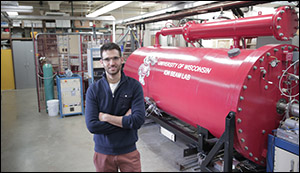New materials for more safe and economical nuclear reactors
12. 12. 2016 | University of Wisconsin-Madison | www.engr.wisc.edu
An international team of researchers has created a nanoceramic material that not only can withstand the harsh effects of radiation, but also becomes tougher under radiation.
Traditionally, water has been used as the primary coolant in reactors, absorbing the heat released from fission reactions. Though water poses fewer risks of corrosion damage to materials, there are also limits to the temperatures up to which water-cooled reactors can operate – and in advanced reactors, increasing their temperature is the best way to increase energy production.

Researchers from University of Wisconsin-Madison and collaborators at the Istituto Italiano di Tecnologia (IIT) in Milan, Italy, characterized an aluminium oxide nanoceramic coating – a new material that can withstand the harmful effects of high-temperature liquid metals in advanced reactors.
Many materials tend to harden and crack when exposed to radiation. However, aluminium oxide nanoceramic coatings toughen, ultimately benefitting from irradiation.
“The pinpoint of our work is the demonstration that an amorphous or nanoceramic material can improve during irradiation, and this opens the path toward a different view of nuclear materials, specifically where coatings are concerned,” says Fabio Di Fonzo, a team leader at the IIT Center for Nano Science and Technology.
Read more at University of Wisconsin-Madison
Image Credit: University of Wisconsin-Madison
-jk-




